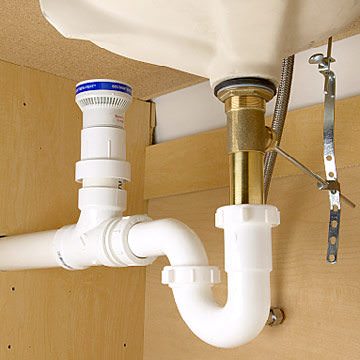When you’re searching for a new house, pesky plumbing problems could be overlooked – especially if you don’t understand how to identify issues lurking behind the walls. Some plumbing flaws are an easy fix. Others can lead to serious damage and major financial woes if they aren’t addressed (preferably not by you!).

Plumbing Issues to watch out for When purchasing a property
Don’t get soaked! Before signing on that dotted line, make sure you look for these five warning signs.
1. Aging water heater
Water heaters aren’t cheap to replace – they can cost you between $600 to $2,000. Before purchasing a home, consider the current condition of its hot water tank.
A water heater lasts about 10 years. A professional can tell the age of it is determined by model and serial number, but corrosion, dampness as well as a lack of hot water are all signs that a water heater is approaching the end of its life. If left too long, the base of a water heater can give out and cause flooding.
It’s also important to look at the location where the water heater is positioned. If it leaks, could it ruin the surrounding carpet, hardwood floor or furniture? Homeowners often hide tanks in a garage close or utility closet, but be wary if these areas are near a living space.
2. Leaky toilets
If a toilet is constantly running, it could possibly mean that a chain or flapper has to be replaced – or it could be a sign of a bigger problem. If the toilet is not draining properly, it can lead to leaks. Toilets can leak from the bottom or from the tank. Water is a universal solvent, therefore it eventually wears down seals and gaskets.
To see if the toilet is in good condition, try to find any damage in the surrounding area. Check for any nearby discoloration. In the event the floor feels soft or if perhaps the bowl wiggles in place once you move it, ask the homeowner why.
A leaking toilet can rot through your floor. To prevent this type of damage, seals and gaskets should periodically be professionally replaced. And if the damage has already been done, you might want to take a pass.
3. Outdated sewage system
When thinking about a home’s plumbing situation, it’s essential to determine the type of sewage system. Generally, the sewer will exit the home at the lowest point of the property. If it’s a city or county system, it’s going to run out to the street or a city main. If it’s septic, it’s going to run into a tank or field. Should the home feature a septic tank, find out where it’s located. Look around that space for water, seepage or unpleasant smells – all of which are warning signs.
If the sewage system includes a main line, it’s advisable to call a professional plumber to do a video inspection to investigate its condition. Sewage lines might be clogged or damaged from nearby tree roots, and old/deteriorating lines can collapse – allowing sewage to back up into your home.
4. Clogged drains
Clogged drains are common. They’re the result of loose hair, toiletry deposits, built-up oils and materials (like metal or paper towels) that don’t belong in any plumbing fixture. When overlooked, clogged drains can lead to serious leaks.
To check a drain, turn on the faucet and let it run for two or three minutes. It ought to drain fast – and continue to drain for the entire duration. In the event the kitchen has a disposal, ensure that runs smoothly, too.
Take it one step further and look below the sink for leaks, water damage or mold (that may cause health issues). While you’re in that area, take note if the drain line or disposal is painted. This can be a sign that the previous owners are covering up a dated system.
5. Poorly installed water pipes
Leaky pipes may lead to serious damage from water. To find out where a home stands, search for the indicators: pinhole leaks, corroded joints and warn piping. If the supply pipes are galvanized, chances are they are going to be dated and will also need to be replaced.
If you notice a restricted flow coming from the home’s drains, there’s a high probability the pipes aren’t big enough. Water pipes really should be at least three-fourths of an inch at the main water source, and a minimum of half of an inch in all other areas.
Pipes should also be properly insulated. This will not only save your money in the long run (since you’ll be conserving water), but it’ll keep them from freezing and even bursting.
A home is one of the biggest investments you’ll make in your lifetime – so be certain you know what you’re getting yourself into. If you’re unsure the way to identify or solve serious plumbing problems, it’s best to call in the experts.
Nick & Cindy Davis work with vendors here in the Tampa Bay area, that we have used for our own home & even our purchases. So if you are ready to get started. Give us a call at 813-300-7116 or simply click here and we will be in touch.
You interested in seeing what homes are available right now?